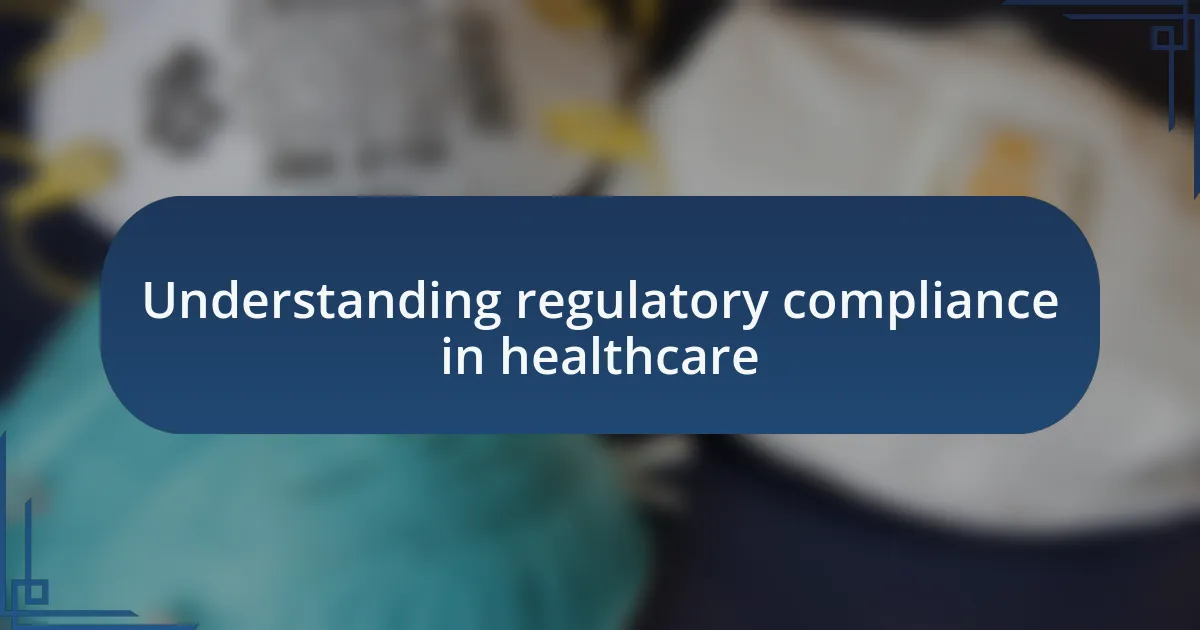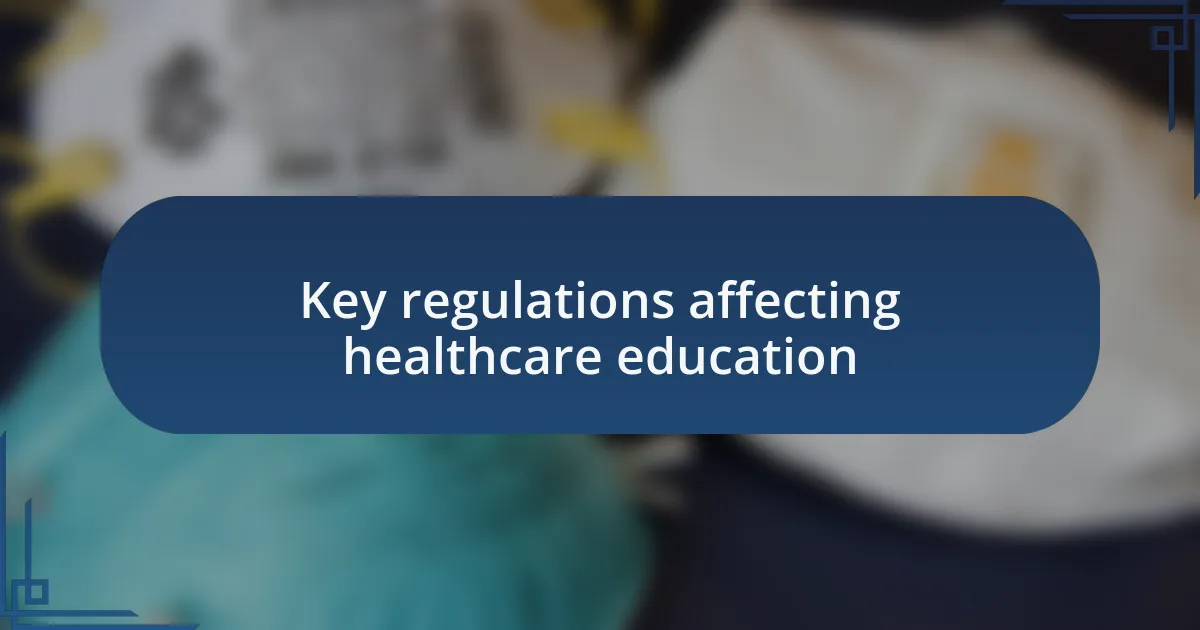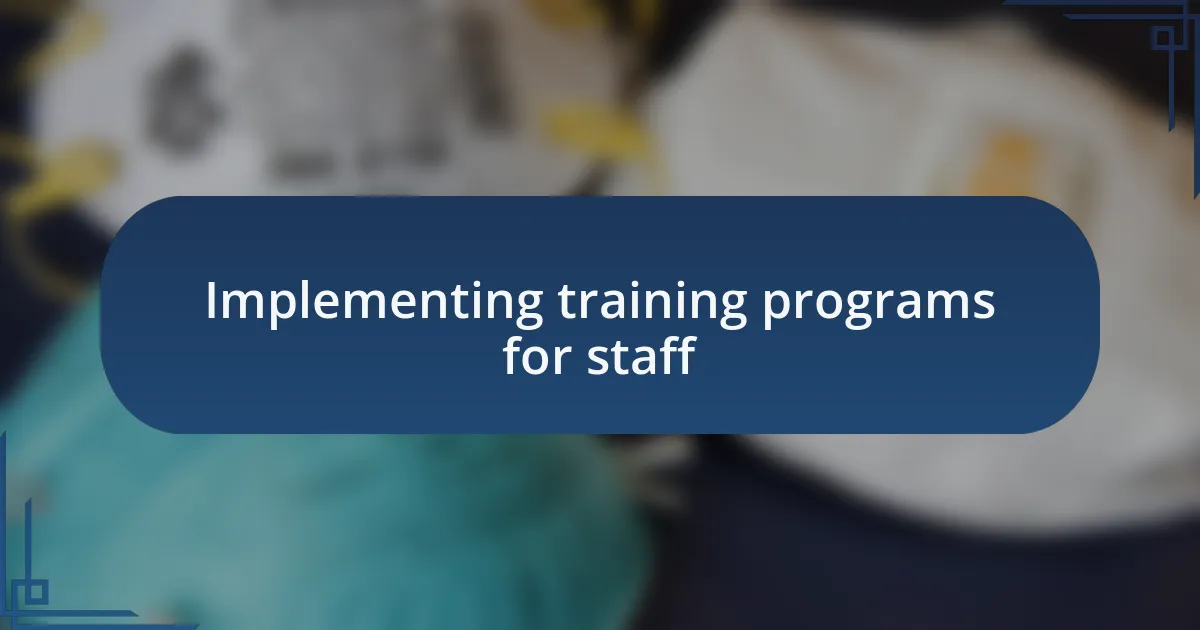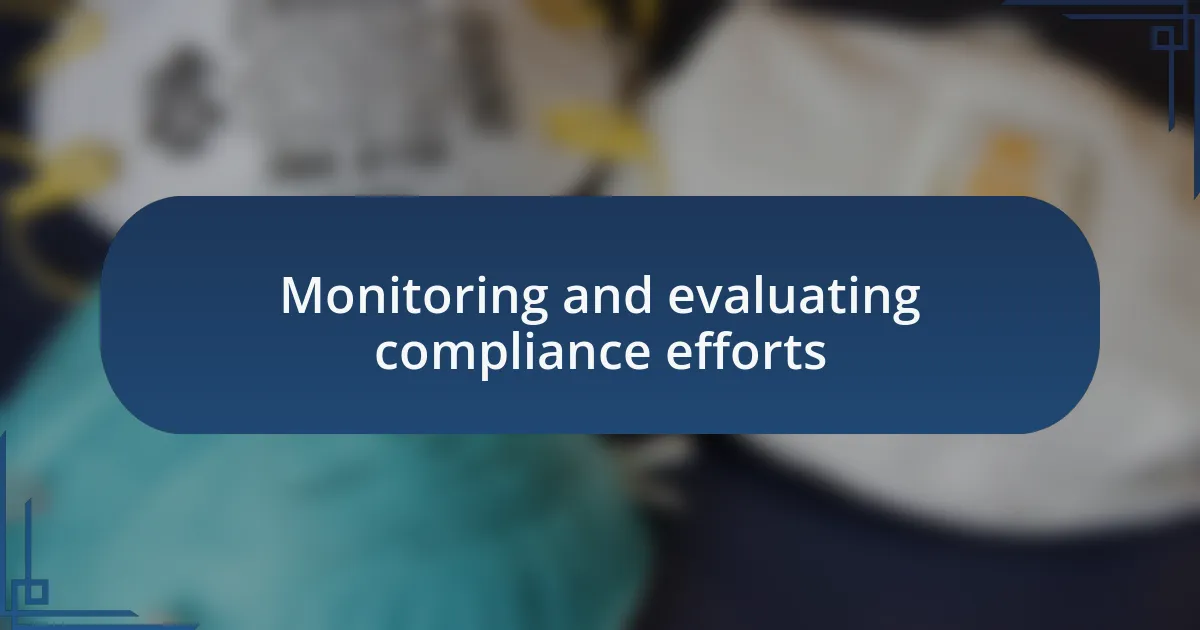Key takeaways:
- Regulatory compliance is essential in healthcare for protecting patient safety, and nurturing a culture of compliance among staff is crucial for its success.
- Key regulations like HIPAA and MACRA directly impact healthcare education and reimbursement practices, necessitating continuous training and integration into daily operations.
- Effective training programs, including real-life scenarios and role-playing, enhance understanding and foster a culture of ongoing education among staff.
- Monitoring and evaluating compliance efforts through tracking systems and regular reviews encourage accountability and improve adherence to regulations.

Understanding regulatory compliance in healthcare
Regulatory compliance in healthcare is often seen as a maze of rules and guidelines, but it is crucial for protecting patient safety and ensuring quality care. I recall a time when I was first introduced to compliance standards; the complexity was overwhelming. However, I soon realized that these regulations are designed not just to keep institutions in check, but ultimately to benefit the patients we serve.
Every healthcare entity, from hospitals to clinics, must navigate a landscape filled with various regulations, such as HIPAA for patient privacy and the Affordable Care Act for insurance protections. I often ask myself, how can we create a culture of compliance among staff? Engaging everyone in discussions about these regulations, sharing stories of real-life consequences of non-compliance, can transform perception from viewing compliance as a burden to understanding it as a shared responsibility.
Understanding compliance also requires continuous education and staying updated with changes in regulations. One instance that stands out to me was a training session I attended, where a simple update in Medicare billing codes dramatically improved our reimbursement rates. Isn’t it fascinating how a single regulatory shift can have such impactful consequences? This is why I believe that fostering a deep understanding of these regulations among all team members is essential for sustainable healthcare practices.

Key regulations affecting healthcare education
Key regulations play a crucial role in shaping healthcare education. For instance, the Health Insurance Portability and Accountability Act (HIPAA) emphasizes the importance of patient privacy, and I’ve witnessed firsthand how our educational programs had to adapt to teach staff and students the intricacies of maintaining confidentiality. It’s not just about memorizing regulations; it’s about internalizing the ethics behind them.
Another critical regulation is the Medicare Access and CHIP Reauthorization Act (MACRA), which affects how healthcare providers are reimbursed. In one of our workshops, we explored the value-based care model outlined by MACRA, and I could see the team connecting the dots between regulatory knowledge and improved patient outcomes. It made me ponder, how can we better integrate these regulations into our daily practices so that they become second nature rather than an afterthought?
Moreover, accreditation bodies like the Commission on Accreditation of Allied Health Education Programs (CAAHEP) set standards that healthcare education programs must meet to ensure quality. I remember preparing for an accreditation review, and the stress was palpable; however, that experience reinforced my belief in the power of structured education. How do these standards influence the way we teach future healthcare professionals? There’s immense potential for growth when we embrace these guidelines as pillars of excellence in our programs.

Implementing training programs for staff
Implementing effective training programs for staff is essential in ensuring everyone is on the same page regarding compliance. I recall a situation where we organized interactive workshops focused on HIPAA training. The room was filled with our team, and as we delved into real-life scenarios, you could feel the shift in understanding. It wasn’t just about the rules; it became a heartfelt discussion about respecting patient privacy and building trust.
One of the most impactful training sessions I’ve led involved role-playing exercises designed around MACRA guidelines. The participants engaged deeply, considering how reimbursement reforms affect their day-to-day interactions with patients. I remember the moment when one team member stood up and shared how these insights led them to rethink their approach to patient care. It was a reminder that training isn’t just a checkbox; it’s an opportunity for personal and professional growth.
Moreover, fostering a culture of ongoing education is crucial. I often ask myself, “How can we continuously evolve our training to meet the ever-changing landscape of healthcare regulations?” For instance, we introduced monthly refresher courses, and I’ve seen the positive results firsthand. Staff members feel more confident in their roles, knowing they’re equipped with the latest knowledge and skills to navigate compliance challenges effectively. This commitment to learning creates a stronger, more compliant healthcare environment.

Monitoring and evaluating compliance efforts
Monitoring compliance efforts is as crucial as the initial training itself. I recall a time when we implemented a new compliance tracking system. It felt like a turning point; I could practically see the team’s confidence grow as they accessed real-time data on our adherence to regulations. It raised a fundamental question for me: “How well are we truly measuring our compliance?” That system allowed us to pinpoint areas needing improvement, fostering a proactive approach instead of waiting for audits.
Regular evaluations also play a pivotal role in compliance efforts. I remember conducting quarterly reviews that not only examined our adherence but also focused on gathering feedback from our staff. Listening to their experiences was eye-opening; they often brought up challenges I had overlooked. It made me realize that compliance isn’t just about ticking boxes—it’s about understanding the real-world implications of those regulations on everyday practices.
Lastly, I believe that transparency in our monitoring process is key. When I share compliance updates with the entire team, I notice a collective sense of responsibility emerge. “Are we truly in this together?” I often ask during these discussions, and the responses I get reaffirm that teamwork enhances our compliance culture. By creating an environment where everyone is aware of our compliance status, we not only foster accountability but also build a supportive community dedicated to navigating the complexities of healthcare regulations.